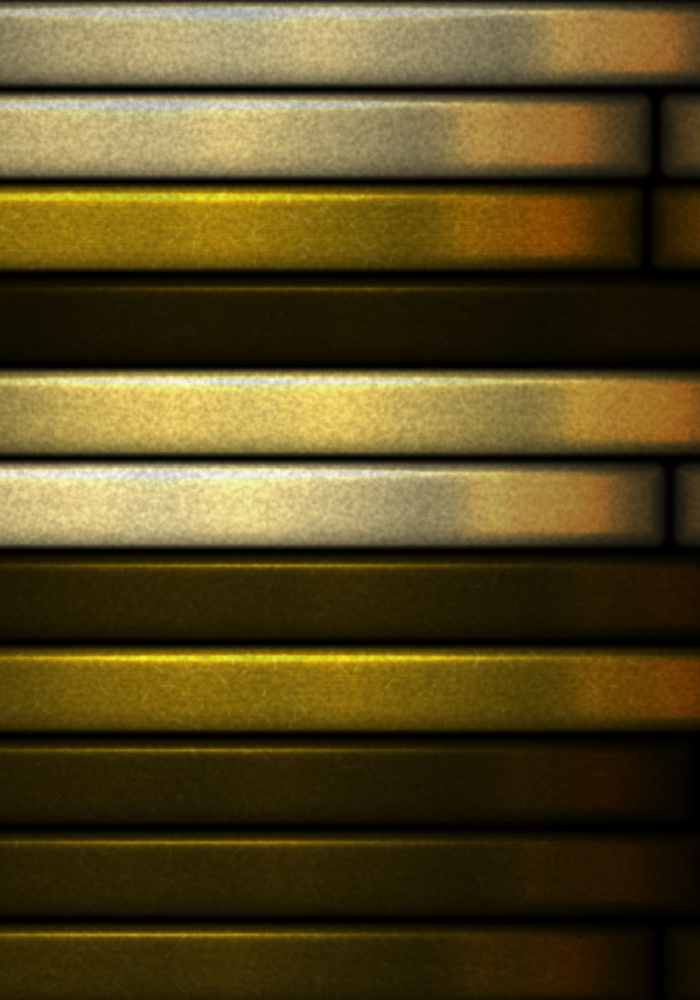Precious metals are mined from the earth, and while they’re
effectively impervious to the elements, there is still a finite amount
of these resources available. In addition to being a legal tender and
a material that offers visual appeal, precious metals like platinum,
gold, and silver are also valued for their practical uses. From
batteries to electronics, medical and dental applications, to
automotive and even space travel, different metals have been
instrumental in our everyday lives and in our leaps in advancements as
a species.
Building and protecting wealth with bullion
For Guildhall clients, bullion products – which is how we refer to
platinum, gold, and silver sold in bar and coin format – are largely
acquired as a means to gain financial stability and long-term purchasing
power.
Not only is bullion a kind of wealth you can get your hand around,
it’s one you can get your head around. Said plainly and honestly, gold is money. The big
difference between it and the currencies or financial products people
often use to measure their wealth, is that
gold is a store of value. The bullion product in your
possession does not shrink. It isn’t tied to any complicated financial
concepts. It stays constant and absolute. No announcement by a CEO,
natural disaster (perhaps short of a volcanic eruption!), or market
activity can ever physically change your bullion or your ownership of
it.
In fact, gold was once used as a backing for several paper currencies
around the world (including the US dollar, until 1971), in a system
called “the gold standard”. The gold standard linked the value of the
paper currency to a certain amount of gold – and some believe it added
much-needed stability and credibility to the currencies.
In part because it is free from mainstream investment and banking
systems and is simple to understand, bullion is recognized and valued
universally. It’s a highly liquid asset, which means that it is very
easily exchanged for currency – it doesn’t have to “mature” like a bond
would, or involve a bureaucratic process to acquire or sell it. You
could theoretically decide one morning you want to sell some of your
bullion and have cash in your hand that afternoon.
Why gold is “the real money”: The universally-agreed characteristics of
money:
There are seven key characteristics that determine if what you’re
holding can be defined as “money”. When a currency, like the dollar, is
compared to this list, it’s doesn’t quite hold up. That’s because
“currency” and “money” aren’t quite the same thing. Gold, however,
perfectly aligns on all seven characteristics of money.
-
Portability: Money should be easy to carry
and transport, making it convenient to use in transactions. -
Divisibility: Money should be easily
divisible into smaller units, allowing for transactions of varying
sizes and values. -
Durability: Money should be able to
withstand wear and tear and maintain its value over time. -
Recognizability: Money should be easily
recognizable and distinguishable. -
Uniformity: Money of the same denomination
should be consistent in terms of size, shape, and design. -
Limited supply: Money should have a limited
supply – it can’t just be created, produced, or printed on a whim – to
ensure that its value is maintained and not subject to inflation. -
Acceptability: Money should be widely
accepted as a medium of exchange in transactions for goods and
services.


How bullion works as a financial asset
Bullion is considered a legal tender. While you’re not likely able (or
would want) to use it to pay for your groceries at your local big box
store, some people indeed incorporate bullion in their personal
trading. Thanks to its liquidity, Canadians can fairly easily purchase
and sell bullion. But its greatest value is realized when it’s used as
part of an individual’s larger financial planning. There are three
main reasons behind acquiring bullion with a long-term view:
-
It acts as a hedge against inflation: The
aesthetic attraction of diamonds is nearly universal. For decades,
red carpets have featured stunning examples of beautifully crafted
earrings, necklaces, rings, and bracelets featuring rare coloured
diamonds. These brilliant pieces often draw just as much attention
as the celebrity wearing them. -
It adds diversification to your overall financial picture:
Physical precious metals are largely unimpacted by the activities of
the stock market, which make it an asset unlike others. In addition
to this, gold is often negatively correlated to the dollar – meaning
that it performs well even when the dollar is not. By including
physical platinum, gold, or silver among a mix of other investments,
an investor can potentially reduce the overall risk in their
portfolio. -
It can act as a safe haven asset: Bullion
products can potentially retain their value during times of market
volatility or economic and political uncertainty. In fact, some
people value bullion even more at these times, and use it as a way
to protect their financial security and wealth.
Want to learn more? Tune into The Real Money Show
On
The Real Money Show, we bring in different experts who offer valuable observations on market
and economic conditions, and how platinum, gold, and silver relate to it
all. We encourage questions from our listeners, too! Check out
The Real Money Show archives
or listen to new episodes on
Global News Radio 640 Toronto
on Saturdays at 1:00 PM EST and Sundays at 10:00 AM EST.
The purchasing power of gold over time
The biggest argument for buying and holding physical gold (or other
precious metals) is rooted in gold’s increasing purchasing power over
time.
The purchasing power of gold can be determined by comparing its current
price to the prices of goods and services over the years. In other words,
you determine what you can buy with a certain amount of gold today
compared to what you’d get with that same amount of gold in the past. This
is especially striking when you factor in how slowly wages have increased
over this same time.
Understanding the purchasing power of your bullion, in relation to your
goals, is important in determining if and when you might want to sell some
of your precious metals. The Guildhall team can not only help you
understand the indicators of an ideal liquidation opportunity, but can
also broker a smooth sale on your behalf. Learn more about this in the
“Enjoy” phase of The Guildhall Strategies, or speak to one of our team
members.

What influences the market price of platinum, gold, and silver
Precious metals are measured by weight – specifically troy ounces. The
price you pay in paper currency for precious metals is impacted by
several different factors:
-
Supply and demand: Like any commodity,
the price of platinum, gold, and silver is largely determined by
basic supply and demand market dynamics. Factors like increased
industrial usage and changes to mining operations can make a
difference in the price commanded by precious metals. -
Interest rates: Precious metals, and
particularly gold, are often seen as an alternative to investments
like bonds and other fixed-income financial products. When interest
rates fall, the appeal of gold as an investment often increases. On
the other hand, when interest rates rise – often to combat inflation
– that can also trigger a demand for gold. -
Economic, market, and political uncertainty:
Because bullion is frequently seen as a safe haven asset, demand
(and the price) for it can increase, when economic, political and
market uncertainty grow. In fact, geopolitical stress often grows as
a result of government-level financial mishandlings or distortions,
which even furthers the appeal of gold. -
Currency fluctuations: Precious metals
are typically priced in US dollars, so fluctuations in the value of
the US dollar can impact the price. If the value of the US dollar
sinks, the price of platinum, gold, and silver may rise. That said,
the gold you own remains steady and maintains its purchasing power
regardless of the volatility of a currency it’s being compared to.
To paraphrase market analyst Bill Holter,
“If the dollar is worthless, then gold becomes priceless.” -
Specifics to the bullion product: As
you’ll read below, the bars and coins available on the market have
different perceived and actual values, which impact the individual
price you might pay.
When is the best time to buy gold?
We believe you’ll make the most of your energy and money if you avoid
trying to “time the market”. To learn how some of our most successful
clients have built and protected their wealth with gold, read about
The Guildhall Strategies
– specifically our advice in a strategy called
“Grow”.
Why some bars of bullion are valued more than others
In addition to the current market price of precious metals, bullion
products can differ from product to product. Here are the main factors
that impact the price and value of different bullion:
-
Weight: Larger bars (in terms of weight)
are generally more valuable than smaller bars. The price per ounce
is determined by the current market price of that precious metal. -
Purity: The purity of a bullion product
is listed in a percentage form, with 99.9% being the greatest level
of purity available. Gold can also be measured in karats, with 24
karats being the purest (99.9%) form of gold. The higher purity, the
more valuable the bullion is. -
Certification: Bullion bars and coins
that are certified by a reputable organization, such as the London
Bullion Market Association (LBMA), will have a higher value.
Guildhall only brokers LBMA-certified bullion. -
Brand: Some brands of bullion bars are
more recognized than others, and this can impact their value. Some
of the most well-known brands include PAMP Suisse, Valcambi, Nadir,
and Asahi. -
Rarity: Some bullion products may be
rarer than others, due to limited production or other factors, and
this can impact their value. -
Condition: While a few nicks, scratches,
and a bit of tarnish on a bullion bar is normal, when it’s time to
sell, you’ll want to present your products as beautifully as
possible. We always recommend that clients keep their bullion in its
original packaging (when available) and to make sure their products
are properly cleaned. This is one reason why it may be worth
exploring
safe and secure storage
options for your bullion.
Because the choices are nearly endless, Guildhall provides our clients
with a smartly curated collection of dependable bullion products that
span different budgets. Learn more about how you can make a purchase
with Guildhall by visiting the
Kickstart section
of
The Guildhall Strategies.


How platinum, gold, and silver differ from each other
The concepts and strategy behind acquiring platinum, gold, and silver
bullion products are largely the same. That said, there are some
meaningful differences between these precious metals that are worth
exploring.
-
Rarity: Of the three precious metals we
carry, the above-ground supply of platinum is the rarest, followed
by silver, and then gold. The cost of mining and refining platinum
is also higher – and while platinum is found in several pockets of
the world, the greatest deposit and supplier of platinum is
overwhelmingly in one spot: South Africa. All of these factors drive
the price of platinum up. That said, gold is the only precious metal
that is yellow, which makes it stand out from the rest and gives it
extra value. -
Industrial uses: Platinum and silver have
more industrial applications than gold, which can impact their
supply and demand dynamics and, in turn, their prices. For example: -
Platinum is used in catalytic converters for
automobiles. This is because platinum has a special quality whereby
it can accelerate or trigger a chemical process without its
structure permanently changing or getting used.
Silver is used in a wide and ever-growing range of
electronic and industrial applications, including photovoltaic
cells, which are critical in generating solar power.
While gold also is utilized in different
technologies, its top usages are the creation of jewelry (in large
part thanks to its malleability), and as backing in financial
systems. -
Cultural perceptions: Even though silver
is actually rarer than gold, societies have long viewed gold as the
more scarce, luxurious, or valued metal. This is most evident in
things like the order of the Olympic medals and language such as
“gold star” or “gold standard”. This perpetuates the perception that
gold is the more valuable of the two metals. -
Historical recognition and performance:
Gold coins have been a long-recognized form of currency in societies
around the world. More recently, gold has proven it can maintain its
value, even during economic downturns and periods of inflation. This
reputation has positioned gold as an attractive investment for many
people.
For these reasons and more, several clients who purchase precious
metals opt to buy all three types to enhance the diversity of their
portfolio. At Guildhall, we’re happy to speak with you, in-person,
over the phone, or on a video call to discuss what bullion is best for
you. Reach out to us to get started.
Is it time for you to start building and protecting your wealth with
bullion?
For most Canadians, it makes a lot of sense to build and maintain a
portfolio where roughly 10 – 15% of their net worth is made up of
physical precious metals. If you haven’t yet made an initial gold
purchase, or are considering
growing your bullion assets, any of the following are indicators that you may do well
acquiring bullion:
-
You’ve got your eye on the big picture.
Precious metals are better suited for those who think about the years
ahead, value long-term planning, fundamental investing, and have the
patience to hold onto their assets until the right time. Platinum,
gold, and silver bullion products are not well-suited for those
looking to ‘get rich quick’ or engage in frequent purchase-and-sale
flips. -
You want to bring more diversity and balance to your investment
portfolio or wealth plan
Gold can be one part of the big puzzle, offering a hedge, safe haven,
and diversity to your overall wealth plan.
The Guildhall Strategies
includes steps on how to
“Grow”
your portfolio and ways to keep it in
“Balance”. -
You have a healthy skepticism of mainstream investment and banking
systems.
Many people are understandably discouraged by the declining purchasing
power of the dollar, market distortions and outcomes,
and the direction our economies seem to be heading. While few are
able to completely detach themselves from mainstream financial
systems, it may give you greater peace of mind to own assets that
are free of it all. In fact, precious metals typically rise in value
when these other assets are faltering. With Guildhall’s exclusive Registered Precious Metals Accounts, you
can even get the best of both worlds – tax advantages with silver and
gold purchases that are stored outside the realm of big banks and
investment firms. -
You want to pass along an inheritance that can be counted on.
So long as your gold is physically secure, it will always be there –
for you, or for the ones you love. Your bullion could make a world of
difference to those who inherit it. -
You enjoy the physicality of this form of wealth.
Some of our clients get real joy out the beauty and look of stamped
gold, not to mention the reassurance of it physically being at their
fingertips. -
Condition: While a few nicks, scratches,
and a bit of tarnish on a bullion bar is normal, when it’s time to
sell, you’ll want to present your products as beautifully as possible.
We always recommend that clients keep their bullion in its original
packaging (when available) and to make sure their products are
properly cleaned. This is one reason why it may be worth exploring
safe and secure storage
options for your bullion.
Because the choices are nearly endless, Guildhall provides our clients
with a smartly curated collection of dependable bullion products that
span different budgets. Learn more about how you can make a purchase
with Guildhall by visiting the
Kickstart section
of
The Guildhall Strategies.

